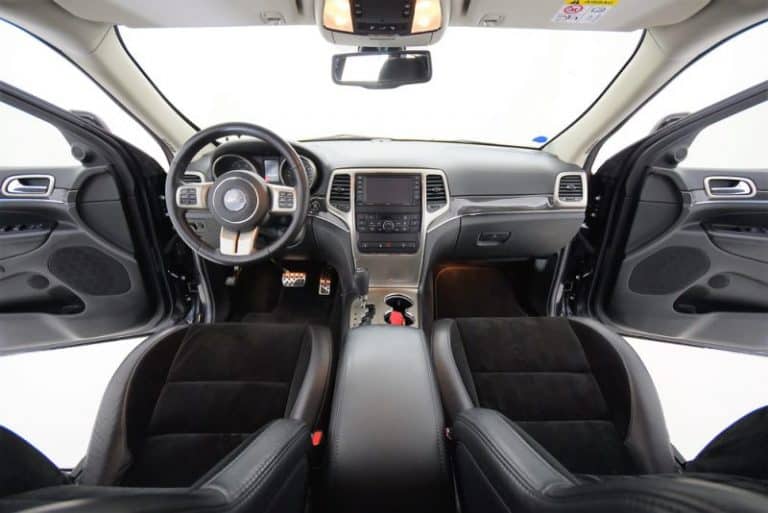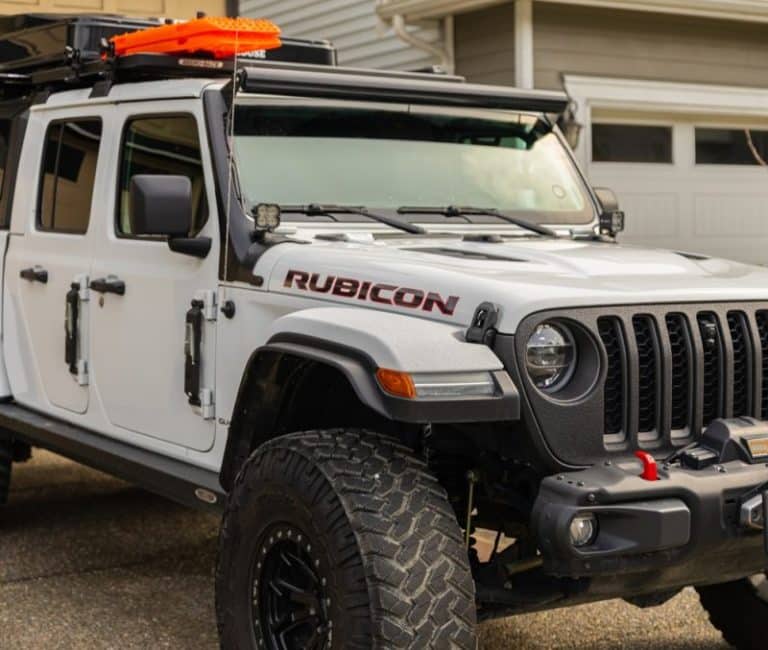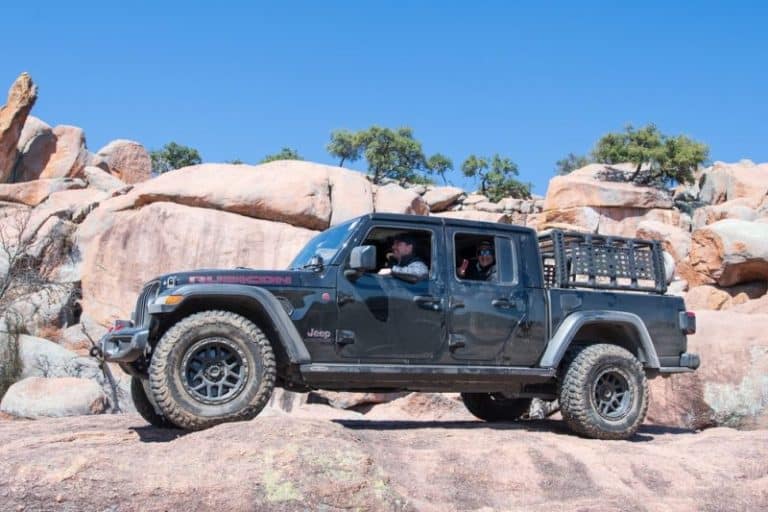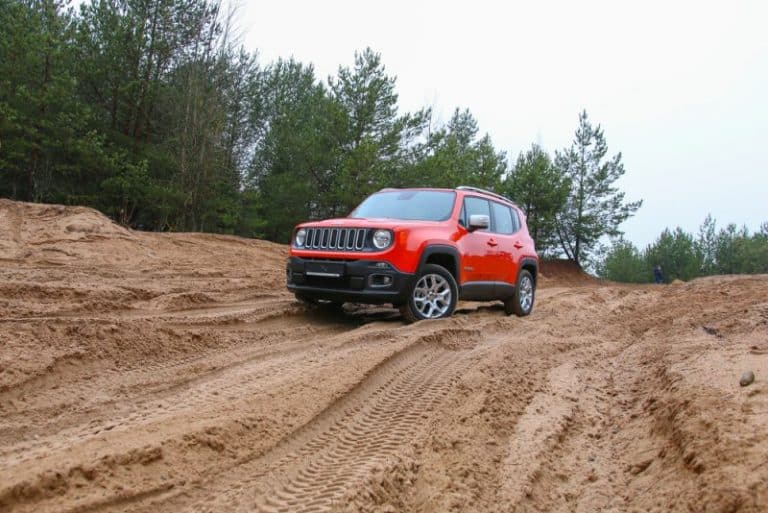How Do I Know If My Jeep Is 4WD Or 2WD? (Beginners Guide)
Vehicles with 4WD (Four-wheel drive) are increasing in popularity and for good reasons.
With this increasing popularity, many drivers now watch for the drive system of vehicles when they’re in search of a new ride.
If you’ve bought a Jeep in recent years, you may also wonder if it has a 4WD or the traditional two-wheel drive. But, how can you tell if your Jeep is a 4WD or a 2WD?
There are three methods of identifying your Jeep’s drive system. First, you can take a test drive and observe how your wheels respond to acceleration. You can also find out by looking at the nature of your driveshaft below the vehicle. Lastly, you can identify your Jeep’s drive system by simply visiting their website! But, how can you tell the difference?
How Do I Know If My Jeep Is 4WD Or 2WD?

In the test drive method, drive to a clear area and press down completely on the accelerator. If just the front wheels move, you’ve got a 2WD. But if all four do or don’t, you have a 4WD Jeep.
As a bonus, if at acceleration only your rear wheels move, you’ve got an RWD (Rear-Wheel Drive), although this is a rare drive train.
However, when you do this, ensure to be safety conscious. Look out that there are no vehicles or humans when you carry out this test. you may read more about 4WD Lock to ensure more safety consciously.
Importantly too, your breaks should be in perfect working condition to assure your safety.
Nevertheless, if the method above is riskier than fun for you, you can try the next method; it will also give you an accurate result.
The second method only requires looking at the driveshaft beneath your vehicle. Before doing this, please ensure that your car is off, parked, and cool.
Aftward, bend over to inspect the driveshaft that emerges beneath the engine and observe where it leads. Not to worry, the driveshaft is conspicuous, thus, hard to miss.
If the driveshaft runs and links to the rear wheels, then your Jeep is a 4WD. But if it doesn’t, you have a 2WD and an RWD in rare cases.
The last method of determining your drivetrain is the most accurate method because it does not even perception of any kind.
So, if you do not trust your perceptive power, this method will be the best, not to mention that it is the most stress-free.
You only need to know your Jeep’s model, trim, and year for this method. You can confirm your vehicle’s drivetrain from Jeep’s website with this information.
Interestingly, you can also identify all the features of your Jeep from this website.
So yes, all you need to do is log into the website from your device and search your Jeep’s model and trim, and you will be able to confirm your drivetrain from the manufacturers without having to call them.
Note that the search on this website is much easier if it is for a recent model.
Differences Between 4WD and 2WD?
The wheel control is the most striking difference between a two-wheel drive and a four-wheel drive. Read more to identify whether your car is 4WD or 2WD.
A 2WD, as the name implies, is a drivetrain where the vehicle’s engine only sends power to two wheels out of four.
It can be the front wheels or the rear wheels as well. So, yes, Rear-Wheel Drive is also a form of 2WD since only two wheels (the rear wheels) receive power from the engine.
On the other hand, 4WD vehicles have their engines supplying power to all four wheels. Still, note that 4WD vehicles are different from the AWD, and you’ll see how a little later.
With power supplied to just two tires in a 2WD, you only have direct control over two wheels, and the other two tires are allowed to spin or follow in the direction of the controlled tires.
However, as you may have guessed, in the case of a 4WD, you get to control all four wheels.
The 2WD has advantages that we’ll consider soon, but many passenger vehicles, or at least the standard trims, come with this drive system.
So if you’ve got a passenger vehicle designed to just cruise through the streets of a city, you’ve probably got a 2WD vehicle.
In contrast, you will find the 4WD in rugged vehicles like trucks because of their design to handle extreme conditions like deep waters, steep hills, and rocky roads or terrains. The power of the 4WD helps it through these challenging terrains.
Note: Though 4WD and AWD vehicles both offer control over a vehicle’s four wheels, they are distinctively different drivetrains.
The difference is that while the 4WD has power supplied to both front and rear tires in sync, the AWD is built to provide traction to all wheels but with the front tires independent of the rear and vice versa.
In practical terms, if the front wheels get stuck in a 4WD, the rear wheels can’t help despite the 4WD’s power.
However, if this happens in an AWD, the rear wheels can run independently to pull the vehicle free.
Pros and Cons of 2WD and 4WD
The different drivetrains we have just considered have their applications for which they are best suited. Even though one seems superior, they all have distinct advantages and shortcomings.
Let’s consider a few of these for each drivetrain.
#1. Pros Of 4WD
- 4WD are better suited for off-road driving as the traction and control that comes from your engine supplying power to all four wheels makes them more suited for potential complications.
- Most of the recent 4WD vehicles allow you to switch to 2WD when you’re driving on smooth roads; this is quite helpful for reasons you’ll find out soon.
#2. Cons Of 4WD
- The most significant disadvantage is the cost of 4WD vehicles. Four-Wheel Drives are very expensive but will give you value for your money.
- Another downside is that they consume more fuel than 2WD vehicles. But this is where the option to switch to 2WD while on smooth roads comes in very handy. The low fuel economy is due to the energy demands of the four wheels.
- Four-Wheel Drives also weigh much more than 2WDs.
#3. Pros Of 2WD
- 2WD vehicles have better fuel economy than vehicles with a 4WD system. There’s much less demand for energy from the wheels, so the engines don’t burn as much fuel to keep you moving as they would with a 4WD.
- They’re also less expensive. You get to save a lot of money when you go for 2WD vehicles. First off, you get to spend much less on fuel, and secondly, the actual cost of these vehicles is much lower than 4WD cars.
- They also weigh less than their 4WD counterparts, making them lighter and easier to move.
#4. Cons Of 2WD
- 2WD cars are likely to struggle on complicated terrains.
When To Use 2WD, AUTO 4WD, 4 HIGH or 4 LOW : A Beginner’s Guide
Which Jeep Models Are 4X4?
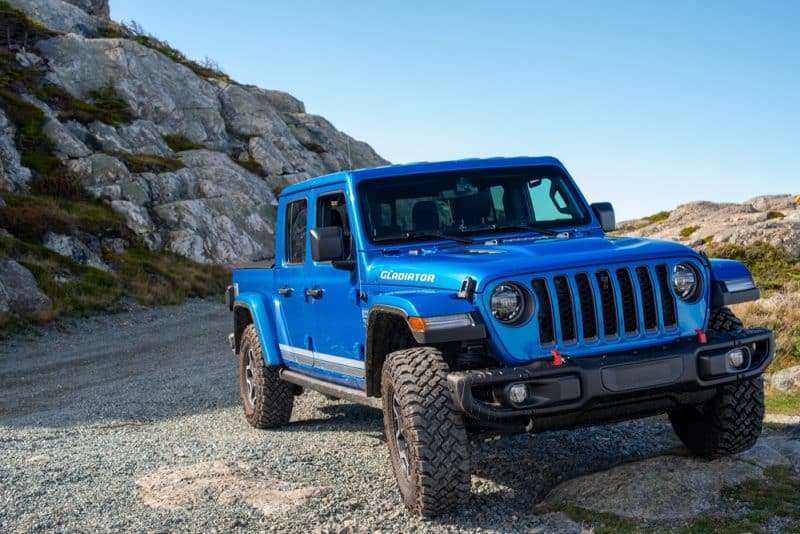
Four-wheel drive systems are a rarity amongst Jeep models. As of now, you can only get 4X4 or 4WD systems in the Jeep Grand Cherokee and Jeep Wrangler.
Recall that the 4WD drivetrain is suited for trucks and rugged vehicles. Jeeps are mostly luxury vehicles fit for cruising around town and thus have little or no need for a 4WD drivetrain.
Additionally, the cost of the 4WD system is too much to overlook for a vehicle that is not needed.
That is why the manufacturers exclude most Jeeps from the 4WD collection to mitigate the overall cost of their vehicles.
Conclusion
Four-wheel drive systems give you power. There’s this feeling that comes with knowing that your vehicle can handle a lot of complicated terrains out there.
Can’t afford one or don’t see the need for one? That’s also cool, as 2WD vehicles also come with enticing benefits.
If you plan on getting a Jeep soon, I hope you create amazing memories with it, regardless of its wheel-drive system.

